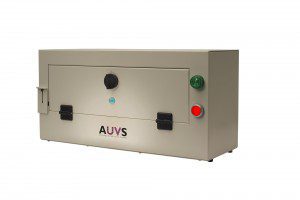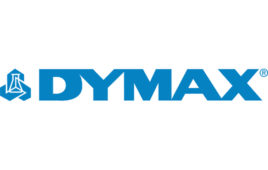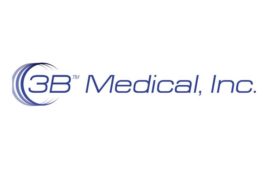
The unit provides a 99.9% kill rate of C. diff and MRSA with just a 45-second exposure.
Advanced Ultra-Violet Systems, llc. (AUVS) has announced the immediate availability of it groundbreaking KR615 UV Germicidal Enclosure which was developed toaddress a dangerous gap in healthcare provider’s Infection Prevention Protocols.
Residing bedside in patient rooms and placed in other healthcare environments including the OR, ICU and Emergency Departments, the KR615 decontaminates high-touch medical and non-medical devices which are known agents of cross contamination that spreads Hospital Acquired Infections (HAIs). Among the items in question are stethoscopes, blood pressure cuffs, nurse call buttons, pillow speakers, EKG wires, blood glucose meters, cell phones, small tablets and TV remotes (see full list below). Currently several factors combine to prevent UV Robots, germicidal wipes or bleaches from adequately decontaminating these high-touch items.
Identifying and Filling the Gap
HAI’s represent a $45-billion problem in the US, are responsible for human suffering, extended hospital stays and morbidity. According to the Centers for Disease Control there were 722,000 HAIs and 75,000 deaths in US acute care hospitals in 2011. HAI’s also put hospitals reimbursements at risk and as such are a significant threat the each facility’s bottom line.
In recent years UV Robots have come on the scene and proven the effectiveness of Ultra-Violet as a disinfecting agent. The problem is that UV robots are unable to address all surfaces that might harbor pathogenic microorganisms, including devices that move in and out of the room. Robots are also not used when the patient room is occupied, creating extended windows during which contaminants grow and spread. Once a patient room is occupied, germicidal wipes and bleaches become the most important component in a hospitals Infection Prevention protocol. Because of the offensive odor and harsh nature of wipes and bleaches, healthcare workers tend to avoid using them or do so sparingly. Even if wipes are used their effectiveness is dependent on the thoroughness of each individual healthcare worker. This leaves the surfaces that they are designed to disinfect largely unprotected.
Another serious drawback of germicidal wipes and bleaches is they can degrade and damage expensive medical devices.
AUVS recognized these factors and developed the KR615 to fill the gap.
High-touch medical and non-medical devices that move in and out of patient rooms can be cleaned as often as needed – even when the patient room is occupied. Each item is simply placed inside the counter-top or wall-mounted enclosure, the KR615’s door is closed and the press of a button begins a 45-second UV decontamination cycle. Even devices that must stay plugged in or connected can be treated thanks to the KR615’s cord/wire routing design.
The KR615 has been proven in independent lab results to destroy 99.9% of the most difficult to kill contaminants responsible for HAIs, including C. diff and MRSA. Another benefit of the KR615, according to Psihas, is that since the device offers none of the offensive or harsh drawbacks of germicidal wipes and bleaches it is more likely to be used consistently by healthcare workers.
Affordability Among a Wide Range of Peripheral Benefits
The KR615 offers a wide range of equally important and peripheral benefits, including: ease of use; affordability; ongoing cost savings; fast Return on Investment and environmental protection.
At just $1,995 per unit the KR615 represents one of the most affordable UV devices available today. By comparison, C. diff wipes will cost a 200 bed hospital $62,000 annually based on manufacturer’s recommended usage. The KR615, on the other hand, is a one-time cost: a bedside utility with no ongoing expenses. According to Psihas, a facility-wide investment inKR615 enclosures, will pay for itself in as little as 6 months depending on the facility’s current usage of C. diff wipes, projected incidence of HAI and other factors.
The KR615’s environmental benefits are also vital. During a 10-year span,a typical 200 bed hospital will send almost 5 truckloads of germicidal C. diff wipes to local landfills. The KR615 on the other hand produces no ongoing waste. Plus, Landfill dumping and related costs are completely eliminated, making it not only a green solution but a sustainable environmental strategy.
Proven Technology from Foremost Expert
The AUVS KR-615 uses a patented, enhanced application of UV developed by Dr. Wayne Clark. One of the foremost experts on UV technology, Clark’s work includes technology developed for the Defense Advanced Research Projects Agency (DARPA) to protect the Pentagon from biological containments.
“By putting the solution where the problem is—in the patient room; treating devices on an ongoing basis, even when the room is occupied; eliminating the drawbacks presented by wipes and liquids, and making the KR615 easily affordable, we feel we can help hospitals deal a major blow to HAI’s; protect patients, families and staff, as well as the facility’s bottom line,” concludes Psihas.
Advanced Ultra-Violet Systems, llc.
www.AdvancedUVSystems.com




